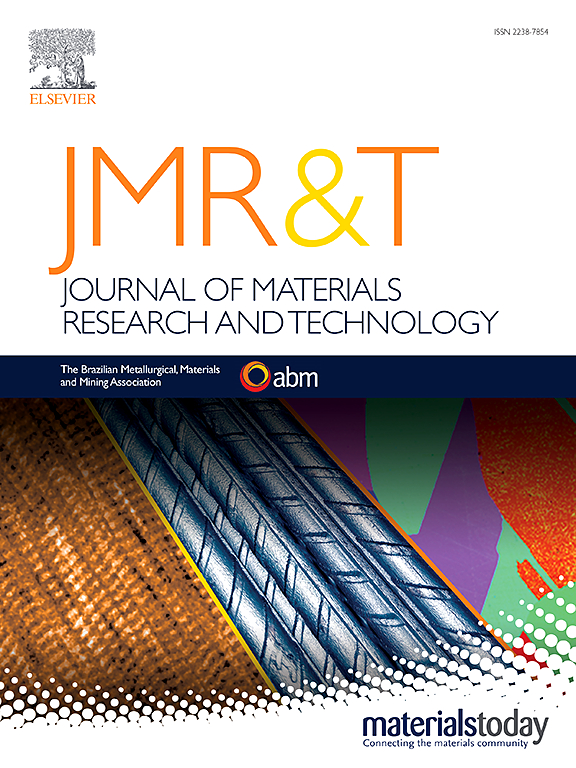Axial creep behavior of FeCrAl nuclear cladding tubes at a temperature of 600 °C
IF 6.6
2区 材料科学
Q1 MATERIALS SCIENCE, MULTIDISCIPLINARY
Journal of Materials Research and Technology-Jmr&t
Pub Date : 2025-06-10
DOI:10.1016/j.jmrt.2025.06.058
引用次数: 0
Abstract
The impacts of axial creep behavior and alloy composition on the design of safe and effective FeCrAl nuclear fuel cladding tubes remain inadequately investigated. The present work addresses these issues by evaluating the axial creep behavior of FeCrAl nuclear fuel cladding tubes in air at a temperature of 600 °C. While the creep test results represent an expected steady state creep behavior under low applied stress, the tubes are mainly in a tertiary creep state at high stress levels. Therefore, the creep test results in the steady state creep stage are fit using a power-law creep constitutive model and the Kachanov-Rabotnov model is applied for the tertiary creep stage. Comparisons between the creep test results obtained for alloys with a variety of compositions and detailed microstructural analysis of the FeCrAl nuclear fuel cladding tube specimens demonstrate that composite Laves phase particles containing Mo, Nb, and Ta are key factors generally in improving the creep properties of Fe-based alloy cladding tube specimens because the composite particles effectively restrict the motion of dislocations. However, the existence of relatively coarse secondary phase particles contributes to the formation of voids via two distinct mechanisms. Therefore, the secondary phases generated during tube fabrication must be of uniform particle sizes and be uniformly dispersed within the alloy matrix to improve creep properties while minimizing void formation.
600℃下FeCrAl包层管的轴向蠕变行为
轴向蠕变行为和合金成分对设计安全有效的FeCrAl核燃料包壳管的影响还没有得到充分的研究。本工作通过评估feral核燃料包壳管在空气中600℃温度下的轴向蠕变行为来解决这些问题。虽然蠕变试验结果在低外加应力下表现出预期的稳态蠕变行为,但在高应力水平下,管材主要处于三级蠕变状态。因此,稳态蠕变阶段的蠕变试验结果采用幂律蠕变本构模型拟合,三级蠕变阶段采用Kachanov-Rabotnov模型拟合。通过对不同成分合金蠕变试验结果的比较和对FeCrAl核燃料包壳管试样微观组织的详细分析表明,含有Mo、Nb和Ta的复合Laves相颗粒是改善铁基合金包壳管试样蠕变性能的关键因素,因为复合颗粒有效地限制了位错的运动。然而,相对粗的二次相粒子的存在通过两种不同的机制促进了空洞的形成。因此,在管制造过程中产生的二次相必须具有均匀的粒度,并均匀地分散在合金基体中,以改善蠕变性能,同时最大限度地减少空洞的形成。
本文章由计算机程序翻译,如有差异,请以英文原文为准。
求助全文
约1分钟内获得全文
求助全文
来源期刊

Journal of Materials Research and Technology-Jmr&t
Materials Science-Metals and Alloys
CiteScore
8.80
自引率
9.40%
发文量
1877
审稿时长
35 days
期刊介绍:
The Journal of Materials Research and Technology is a publication of ABM - Brazilian Metallurgical, Materials and Mining Association - and publishes four issues per year also with a free version online (www.jmrt.com.br). The journal provides an international medium for the publication of theoretical and experimental studies related to Metallurgy, Materials and Minerals research and technology. Appropriate submissions to the Journal of Materials Research and Technology should include scientific and/or engineering factors which affect processes and products in the Metallurgy, Materials and Mining areas.
 求助内容:
求助内容: 应助结果提醒方式:
应助结果提醒方式:


